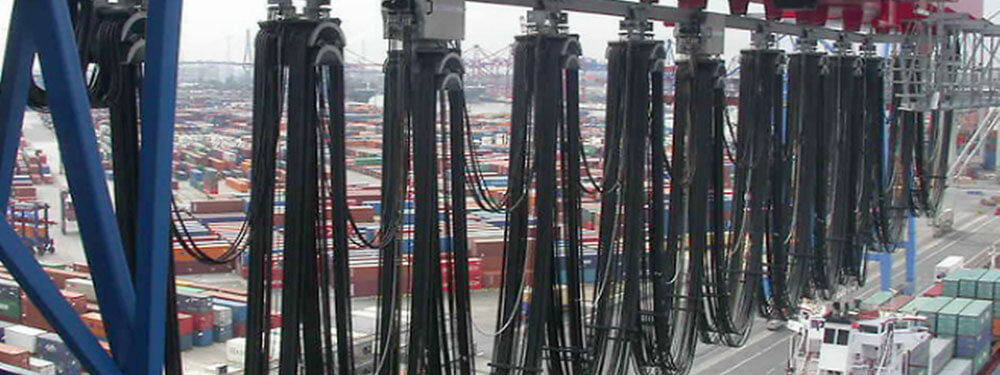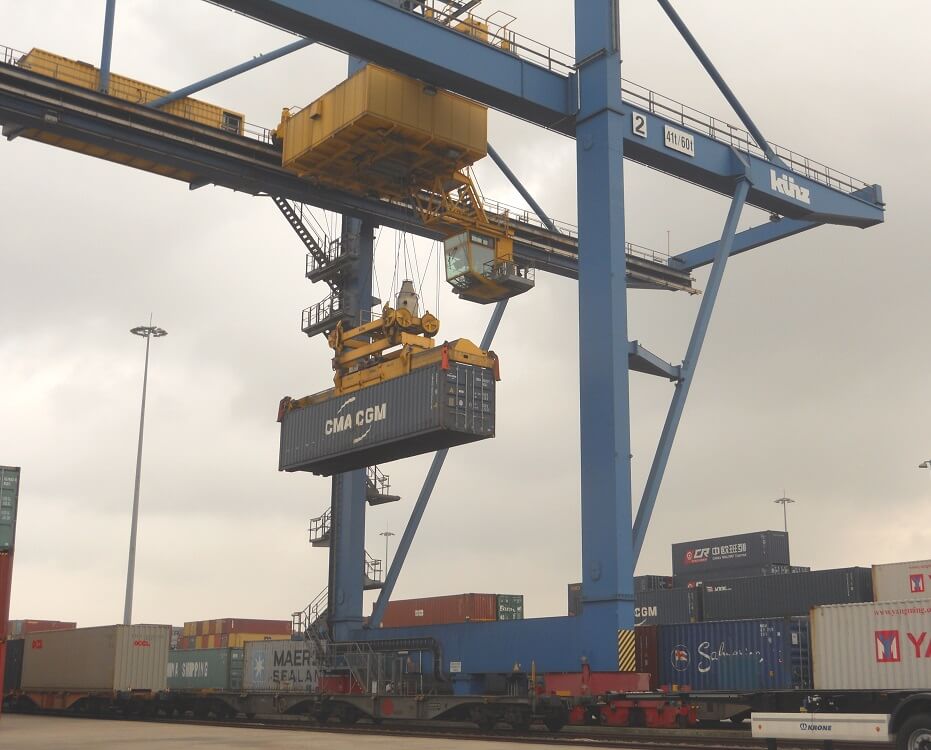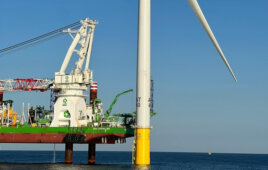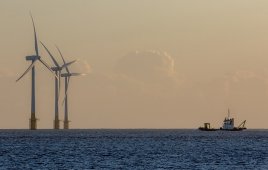A lot of the manual labor that went into the manufacturing of wind-turbine blades is giving way to automation in robots that extend the length of a mold. The robots apply the fiberglass or carbon-fiber plies, along with resin binders for blades that can reach 60 meters and more.

Festooned cables at ports are almost problems waiting to happen. One UK maintenance manager said that in four years of operation, he would expect to spend about $25,000 on repairing them.
For such a long reach, designers of the automation could have used festoons, loops of cable that adjust with the robot’s position. Festoons, however are problematic in that the dangling cables are exposed to accidents and wear. There are ways to better control cables on robots that allow movement over considerable distances. Although the example here, a gantry crane working on a river port, is not wind-turbine related, the application is the same.
Many gantry cranes still use conventional festooning to gather and payout electrical cable during operation. The cranes, such as those at ports, allow movement in three axes so they can pick up 40-ft long shipping containers to stacked them for temporary storage or offload them to trucks and flatbed railcars.

Designers for this crane at the Port of Duisburg on the Rhine river in Germany considered festooned cables for power and control but instead designed it with a igus e-chain. Their goal was lower maintenance costs than that for cranes using festooned cables. The e-chain is just out of sight in the beam above the operator’s cabin.
As the gantry moves back and forth, the festooning system provides power and control signals to the motors driving the systems. The problem is that the festooned cable is exposed to the elements so they wear as they rub against each other or they get tangled in high wind. Then the cables must be untangled before the crane can resume operation, which is not an easy task because they are so high up. The tangle also means a ship is delayed from offloading and spends more unplanned time in port, which incurs fines for the port operator.
However, more modern methods provide control signals and power that avoids the tangles and wear. The product, e-chain from igus, consists of an enclosure that secures from a few cables up to 10 and more. Each short link of the e-chain is a small enclosure hinged to the previous and following sections so the chain can fold over onto itself, thereby maintaining a minimum bend radius.
Reported advantages of the e-chain are lower inertia, which translates to lower operating costs, and better protection for lower maintenance costs. The port of Virginia says it spent all of $40 on repair parts in four years, a significant cost reduction reports Theo Diehl, head of International Crane & Material Handling of e-chain systems for manufacturer igus.

At another port, an e-chain installation shows how it works and stays well out of the way other potentially hazardous yet typical activity.
Diehl also says that in the UK, a maintenance manager decided to replace the e-chain that worked flawlessly for five years and looked good-to-go another five years. “Why replace them?” asked Diehl. “The operator there told of festoons that would have caused many problems had they been on the port cranes for the last five years. Experience told the Brit that festoons would have caused more than $25,000 worth of problems in the same period. The e-chains had paid for themselves so it made sense to replace them during planned maintenance before they became a problem, even though they had not worked their usual 15,000 cycle life.”
Diehl said that to replace a festoon cable system requires first assessing the power and signal requirements of the crane. Then igus engineers select the cables and e-chain, produce the assembly, manufacture the clamps that will fit the e-chain to where the festooning system once resided, and install it. The install takes about one week for a large system. Diehl adds that igus e-chains are working in over 300 ports around the world.
Filed Under: Cables & connectors, O&M




